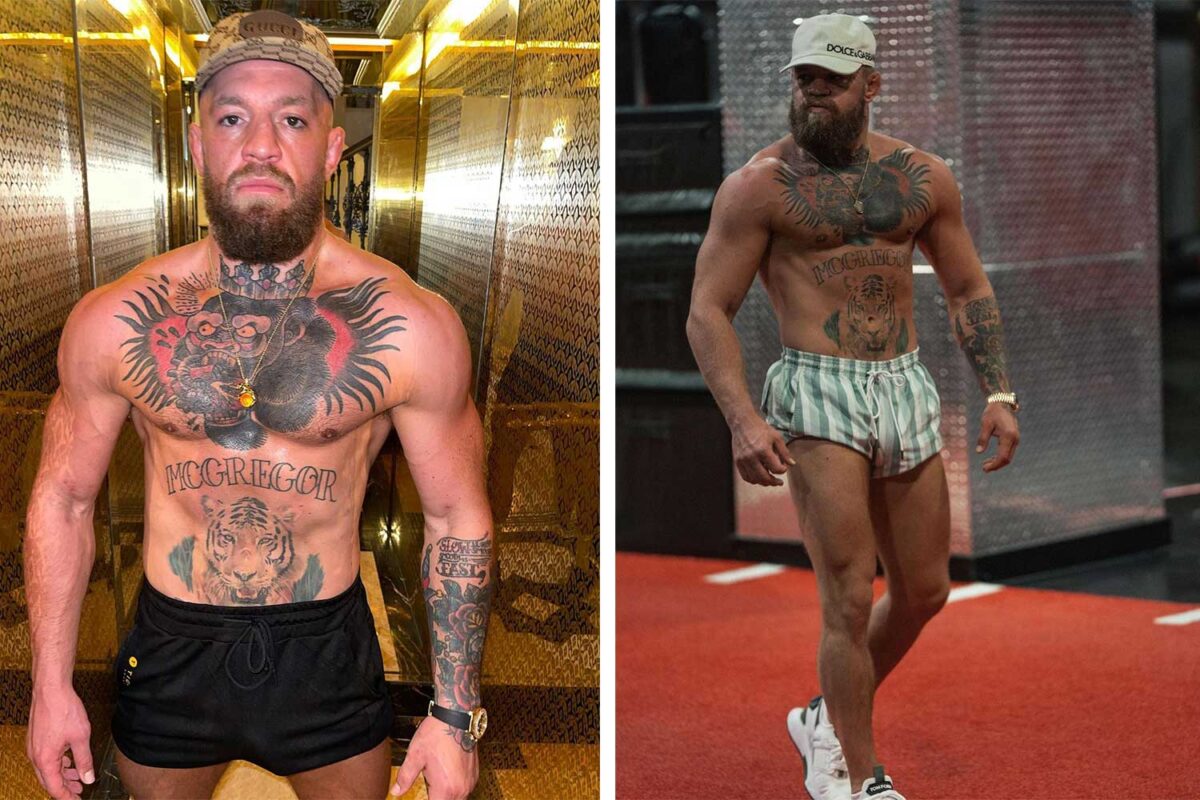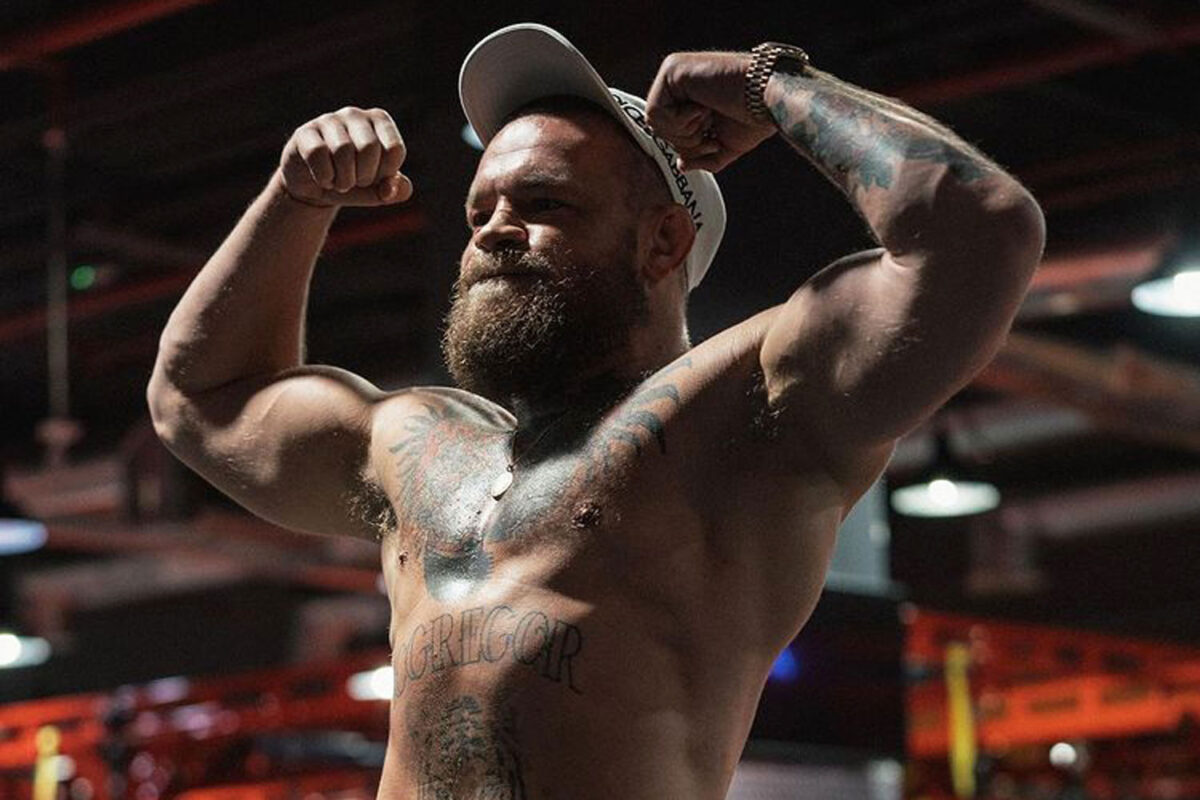Love him or hate him, nobody can truly deny the commitment Irish MMA fighter Conor McGregor has for his craft, and his latest body transformation proves he’s more committed than ever.
Always one to run his mouth and have an all-around ‘f**k it’ attitude, McGregor is someone who will do anything it takes to succeed. His recent run of form hasn’t perhaps been his best, however, losing twice via technical knockout against Dustin Poirier in 2021.
During their most recent match on 10 July at UFC 264, Conor suffered a broken tibia, putting him out of action for some time.
RELATED: Conor McGregor finally announces sensational return to UFC
Conor McGregor’s MMA Transformation
But, as we said, Conor is a man who never throws in the towel and, in recent months, has given us all a glimpse into the amount of effort he’s putting into training so he can get back into the octagon. He’s not only confidently exclaimed he’ll “be back!” but has also proven there’s never an excuse to not work out.
And that training appears to be paying off, as some images he posted to his Instagram a few days ago shows him looking bigger than ever. Just a month ago in November, Conor posted an image of himself, still looking great, but definitely a lot leaner than his new December rig. But what is the secret to Conor McGegor’s MMA transformation?
DMARGE spoke to Scott Reynolds, Fitness Director and Co-Founder of Combine Air, to find out.
Scott admits “his transformation since July has been impressive, to say the least,” and adds, “his training has been limited while recovering from his injury.”
“His training since his injury would be a combination of strength training and healthy bulk eating. His only conditioning/fitness work would be on the bike at a lower intensity, therefore not generating too much calorie burn and holding more energy, which leads to the weight increase.”
It’s often been believed that cardio and strength training simply cannot co-exist. However, there are now some weighted arguments to suggest that isn’t necessarily the case, and so those who commit to strength training can actually benefit from some cardio work.
Naturally, some people will look up to Conor McGregor as a source of fitness inspiration, and will now be hoping they too can make similar progress if their goal is to put on muscle and ‘bulk-up’. But just how realistic is it they can achieve similar results in a similar timeframe?

Scott says, “Conor has a lot more time on his hands than most of us. His motivation to get back in the octagon is at an all-time high, his personal team and chef would ensure meals are being consumed at the right time and quantities.”
“The Average Joe would need to ensure they have a well thought out and programmed game plan. To put on a similar amount of size in that time frame you would need strength training daily and a well-designed nutrition program.”
Essentially, hire yourself a personal trainer and a personal chef. Easy.
To help you on your way, Scott provides a few example workouts and exercises you can include in your workout routines to help put on some upper body muscle.
“Looking at Conor’s Instagram he has used EMS in his training,” Scott relates. EMS refers to Electrical Muscle Stimulation, which uses a wireless device to stimulate muscle fibres whilst you’re working out, causing the muscle tissue to work harder and more effectively. “This will assist, stimulate and re-engage the muscles post-surgery in his legs,” Scott says.
“His lower body has been impacted the most and is very noticeable with his muscle loss. Conor will only now just start to introduce light leg press, extension and curls, sled pushes, squats and deadlifts.”
“He has clearly focused on upper body strength. Movements like seated cable rows, bench press, military press and lat pulldowns. His weights would be heavy with rep ranges around 8-12 and sets of 4-5.”
Injury can occur for any of us at any time, and if you’re someone who’s either an athlete or just enjoys going to the gym several times a week, an injury is obviously going to set you back. So, what do you do? Do you accept defeat until you recover, or can you continue training to some degree?
Scott says you should “find things that you can do that don’t impact your rehabilitation program. You’ll always be able to adapt to your training.”
“It’s better physically and mentally to continue training rather than waiting for the specific injury to heal. Simulated Altitude Training is an incredibly effective training method for anybody to use while carrying an injury. The atmosphere will help burn more calories than anywhere at sea level, they will also burn more for longer after every session.”
“The altitude also helps our bodies release more growth hormones, this means it’s easier to build lean muscle and develop strength.”
We can’t imagine it’ll be too long before we see Conor fighting in the octagon ring once again.
